Historical background
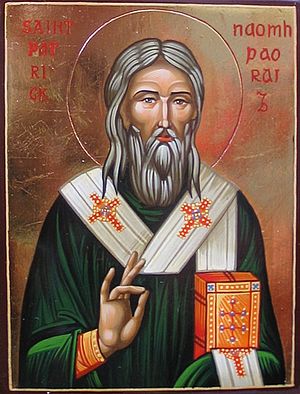 Saint Patrick
Saint Patrick St Patrick is traditionally credited with organizing the Irish Church, although his activities were concentrated mainly in the northern province of Ulster. It is likely that St Patrick received his spiritual instruction in the south of France, at the monastery of Lérins. This great institution was founded by St Honoratus in 375, upon his return from Greece where he had become familiar with Orthodox Christian monasticism. Like many future, Irish monasteries, Lérins was situated on a small island. For the next three centuries Lérins would be a beacon of Orthodox spirituality in the midst of a worldly Latin environment. One of the great figures attached to Lérins was St John Cassian, who strove to preserve the Orthodox faith against deviations from sound doctrine by certain extreme followers of Blessed Augustine.
When St Palladius, St Patrick and their fellow evangelists came to Ireland there were more than a hundred kingdoms of varying size to be found on the island. The people of each kingdom were known as the tuath, while the king bore the title of ri. Society was highly organised and stratified, reminiscent of the Vedic caste system. At the top were the druids, bards, lawmen and doctors, while the slaves at the base of the system had no rights. As remarked by historian David Ross, the concept of territorial dioceses could not function in such a social system. Each tuath had to be converted separately and each had to have its own Church structure, with priests and bishops effectively replacing the druids. Eventually five provincial kingdoms arose in the place of this hotchpotch of petty rulers: Munster in the south of the island, Leinster and Meath in the east, Connaught in the west, and Ulster in the north. On the odd occasion, such as the reign of Brian Boru (1002-1014), one of the provincial kings would claim the high kingship over all Ireland, based at the ancient site of Tara in County Meath. This high kingship was never uncontested or of any lasting significance. Although politically divided, before the Anglo-Norman invasion the Irish people were more or less united by three important factors: the Brehon law code, the Gaelic language and the Christian Faith.
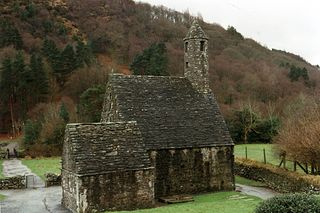 Saint Kevin’s Chapel in Glendalaugh, Ireland
Saint Kevin’s Chapel in Glendalaugh, Ireland Through the dedication and perseverance of St Patrick and his successors, Ireland became a bastion of Christianity. As a matter of fact, the Irish Church was to remain faithful to Orthodox Christianity for several centuries to come, while the rest of the Western Church, especially from the late eighth century, began increasingly to deviate from the ancient Orthodox Christian Faith. The year 500 is reckoned as the commencement of the Golden Age of the Irish Church. Over the next century monasteries would be established all over Ireland. The unprecedented upsurge of Christianity in this part of the world can be witnessed from the fact that in the first 250 years following St Patrick’s arrival, Eire produced around 500 recognized saints. None of them was martyred, except on the Continent, which confirms the existence of a close affinity between the ancient Christian Faith and traditional Irish spirituality.
The Eastern connection
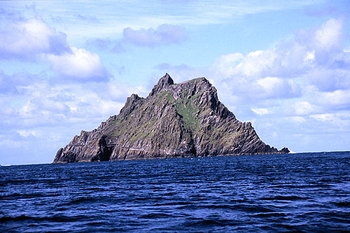 Skellig Michael Monastery island, Ireland
Skellig Michael Monastery island, Ireland A major divergence between Ireland and Rome lay in the former's older, and actually incorrect, method of calculating the date of Easter, in which the Irish Church used a 84-year cycle based on the lunar calendar. In contrast, the Roman Church, like the rest of the Universal Church, used the solar calendar and ensured that Easter never fell on the same day as the Jewish Passover. This aspect would eventually become the main bone of contention between Rome and the Celts, with Rome winning the conflict at the Synod of Whitby held in 664. (To this day the Orthodox Church still calculates the date of Easter according to ancient Universal custom, so that the Non-Orthodox Easter falls one to five weeks before the correct Orthodox Christian Easter).
Different rites were employed by the Irish and Roman churches in the sacraments of baptism and episcopal confirmation. Also in the tonsuring of monks a divergence occurred: while the Roman tonsure involved shaving the top of the head, the Irish shaved across the forehead from ear to ear. These methods were ascribed to St Peter and St John, respectively. Old Irish customs such as storing water for the feast of the Epiphany (6 January) and lighting Easter fires to let them burn throughout the year (for example at Kildare) were also unique. Naturally, on the early Irish crosses Christ is pictured as the conqueror of death rather than as crucified – another parallel with the Universal Orthodox practice of Old Rome and elsewhere, according to which the celebration of the Resurrection of Christ takes precedence over that of His death, with Easter Sunday (Pascha) as the main feast of the Church year. The practice only changed from the late eleventh century on, when heterodoxy began to portray 'the suffering Jesus' in his human nature as a victim, not as the Victor. In addition, the study of Greek was undertaken in Irish monasteries at least until the ninth century, together with that of Latin and Hebrew.
It is interesting to note that in some of the Irish monastic settlements not only monks and nuns were to be found, but also married couples and families. This is a further parallel between Irish and Universal Orthodox practice, with married priests being the norm in the Orthodox Church to this day, without in any way diminishing the vital importance of the monastic vocation in the Church. The very organization of the Irish Church was of a monastic nature, with the abbot or abbess being the highest authority in a given area. This was in contrast to the diocesan structure of the rest of the Church, in which the bishop is the highest authority.
In addition to the monastery at Lérins that served as an important link between the Irish and Eastern Churches, Poitiers in France was a further conduit of Orthodoxy to the West. This was the final abode of St Hilary (315-367), a bishop who was banished to Phrygia by the unbaptized Emperor Constantine when the saint refused to yield to Constantine’s then Arian sympathies. This is rather ironic, for it was the same Emperor who convened the First Oecumenical Council in 325, at which Arianism was condemned as a heresy. Hilary went from Phrygia to Poitiers where he wrote a book dedicated to the ‘Irish bishops’. This implies contact between the Greek-speaking and Irish churches via France during the fourth century already. Early in the 6th century a monastery would be founded at Poitiers by the Irish missionary St Fridolin.
Another affinity that the Irish shared with the Orthodox practice was its own form of the liturgy. Over the centuries the Orthodox Church has maintained a variety of liturgies, all of ancient origin, such as the liturgies of St John Chrysostom, St James the Apostle and St Basil the Great. Evidence of a pre-Roman liturgy of the Irish Church can be found in manuscripts such as the Antiphonary of Bangor, a collection of hymns and prayers dating from around 680. These texts radiate a Christian view of the world that echoes the Psalms in praise of God’s creation, as in the writings of the Church Fathers. All of creation is viewed as a vast whole, without the dualism of spirit and matter that would become the dominant post-Patristic medieval Western heterodox cosmology. It is pertinent to note that the metaphysical system expounded by the Irish philosopher John Scottus Eriugena (see further on) would also reflect this awareness of the unity of all creation. This reinforces our view that Irish Christianity was a holistic, Patristic faith.
Irish missionary activity
From their base in Ireland, missionaries spread out over Britain and continental Europe, proclaiming the Gospel, baptizing the people, and establishing places of worship and instruction. They often wandered about in groups of seven, or more often twelve, plus a leader, following the example of Christ and His twelve apostles. According to a 1966 study by Georges and Bernadette Cerbelaud-Salagnac, nearly 300 Irish missionaries went to Britain and the Continent. An even larger number set out from the monastery at Luxeuil (which was founded by St Columban in Belgium around 591) to the surrounding lands.
The major figures in this enormous Irish missionary activity were St Columcille, who founded the monastery on Iona and evangelized the Scots and Picts; St Aidan, who founded the monastery on Lindisfarne and evangelized the Northumbrians; St Fridolin, who founded monasteries in France and Germany; St Fursey, who founded monasteries in East Anglia and Gaul; St Kilian, who did missionary work among the East Franks and the Thuringians, and suffered martyrdom; St Gall, the Enlightener of Switzerland; and St Columban, who founded monasteries in Belgium, Switzerland and Italy against fierce opposition. We will look at their lives further on in this essay.
Apart from a major impact that was made in Britain, the German lands and as far south as Italy, the Irish missionaries also ventured into the North Atlantic and Scandinavia. The notable contribution made by St Brendan the Voyager will be discussed further on. According to Dicuil, an Irish scholar at the court of Charlemagne, Irish settlers had been living in the Faeroe Islands for several centuries by the year 800. We may safely assume that this would have included missionary activity, given the close link between religion and everyday life in Celtic Christianity. Old Irish parchments, bells and bishops’ staffs were found on Iceland, predating the Viking era. Furthermore, the ornamentation of Norwegian stave churches showed Irish influence as late as the thirteenth century. There must therefore have been some Irish contribution to the conversion of Scandinavia to Christianity, although further historical evidence is lacking.
The end of the Irish Church
From 795 Ireland was subjected to the constant threat of Viking raids, the first recorded one taking place on Lambay Island near Dublin. For the next 40 years these raids would occur randomly, but from the late 830’s the Vikings began to use Ireland as a permanent base. The Norwegian and Danish invasions of Ireland during the 9th and 10th centuries almost destroyed the monastic life of the country. Great monastic centres such as Armagh, Bangor, Clonfert and Clonmacnoise were plundered by the Vikings, with many monks being killed by the heathen invaders. Even the famous island monastery of Iona had to be abandoned by 830. An interesting architectural legacy of these raids and invasions is the round towers found in Ireland and also in Viking-beset East Anglia in England. These imposing structures served as places of security for people and treasures, with a fair number having survived both the Vikings and the radical Protestants. At times the Irish kingdoms fought back, for instance when the Viking chieftain Thorgest, who had desecrated Clonmacnoise and put his wife on the high altar, was captured and drowned by the king of the O’Neill dynasty. On the positive side, the Vikings founded major Irish towns such as Dublin, Wexford, Waterford, Cork and Limerick, from where they traded with both the Irish and their fellow Norsemen in the Hebrides, Man and elsewhere. As so often happens in human history, God brings good even out of the most disastrous events.
Most of the ancient Irish manuscripts were lost in this stormy period, the surviving ones often being taken to the Continent by monks. Early in the 11th century King Brian of Munster sent messengers to the Continent to buy back some of the ancient manuscripts. This monastic vacuum opened the door for the Roman Church to obtain a foothold in Ireland, with large numbers of Augustinian and Benedictine monasteries eventually replacing the lost native ones.
The migration of Irish monks to the Continent was brought about not only by the negative aspect of Viking invasions, but also by the positive aspect of the attraction of the Carolingian court in France, who welcomed intellectuals from other parts of Western Europe. This explains the presence of notable Irish scholars such as Martin Hiberniensis, Sedulius Scotus and John Scottus Eriugena at the Frankish centres of learning during the ninth century. Through their educational work on the Continent the Irish monks brought about the end of the Dark Ages there.
Most of Western Europe followed Rome in its breach with the multinational East, formalized by mutual excommunications in 1054 and sealed by the sacking of Constantinople by Roman Catholic Crusaders in 1204. For Western Christianity this severance from its Middle Eastern and Greek roots would prove to be disastrous from every point of view – theological, moral, cultural, and socio-political. However, the Irish Church remained for all practical purposes an autonomous Church, even though it was not formally in communion with the Orthodox Church in the Middle East, the Eastern Roman Empire and Kievan Rus. The Anglo-Norman invasion of Ireland, first under Strongbow in 1170 and a year later under the Anglo-Norman King Henry II, was therefore encouraged by Pope Adrian IV, the first and only Englishman to occupy the pontifical throne, in order to bring the Irish Church into the Roman fold. Already in 1154 Adrian had issued a papal bull calling for a Norman invasion of Ireland, so that ‘the true Christian religion’ (i.e. Roman Catholicism) could be planted in Ireland.
The first step in the Roman takeover of the Irish Church in its home base was taken when the Norman-imposed, Italian Archbishop Lanfranc of Canterbury claimed superiority over the Irish Church in 1072. Early in the twelfth century Armagh in the north and Cashel in the south were raised to the status of Roman Archdioceses, with Armagh soon to become the Metropolia for the whole of the Irish Church. Before long Dublin and Tuam would also become archdioceses, thereby weakening the hold of Canterbury over the Irish Church, without diminishing Roman hegemony. Over the centuries Armagh has retained its pre-eminent status in both the Roman Catholic and Anglican churches, both Cathedrals there being dedicated to St Patrick.

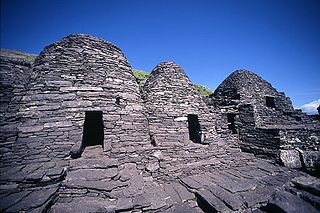
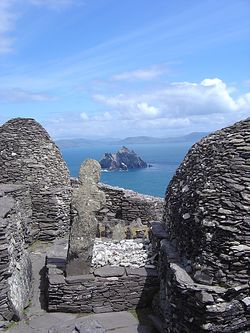
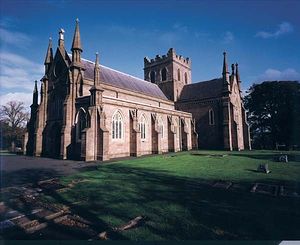
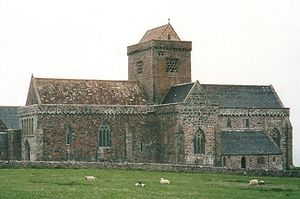
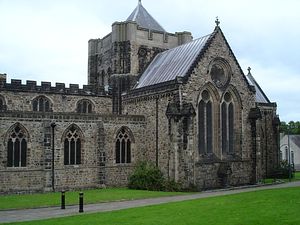
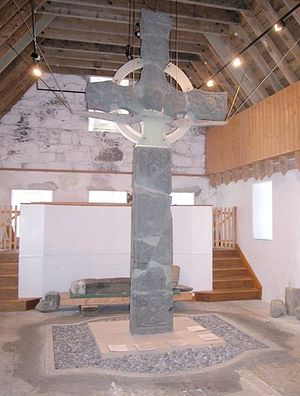
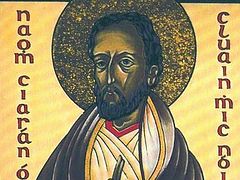
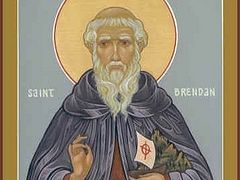

Please pray for Amanda Dennis 28 yrs old and my son Jadon Kalp 9 yrs old
with a rare gain of function stat one gene mutation and for my Care giver
Denise Mastro 61 yrs old who helps any one in need she would love to see
her children and grandchildren who lives in California and we live in
Pennsylvania esp because her Daughter Tara is a genesist and could give
Jadon geno therapy but it's very expensive we need a miracle,
Jade Benco whos a recovering drug addict and she has 4 children and ones 8, Mathew Miller who was falsely accused of something he didn't do and was in prison for 12 yrs since he was a child a judge took money to keep him and others for no crime